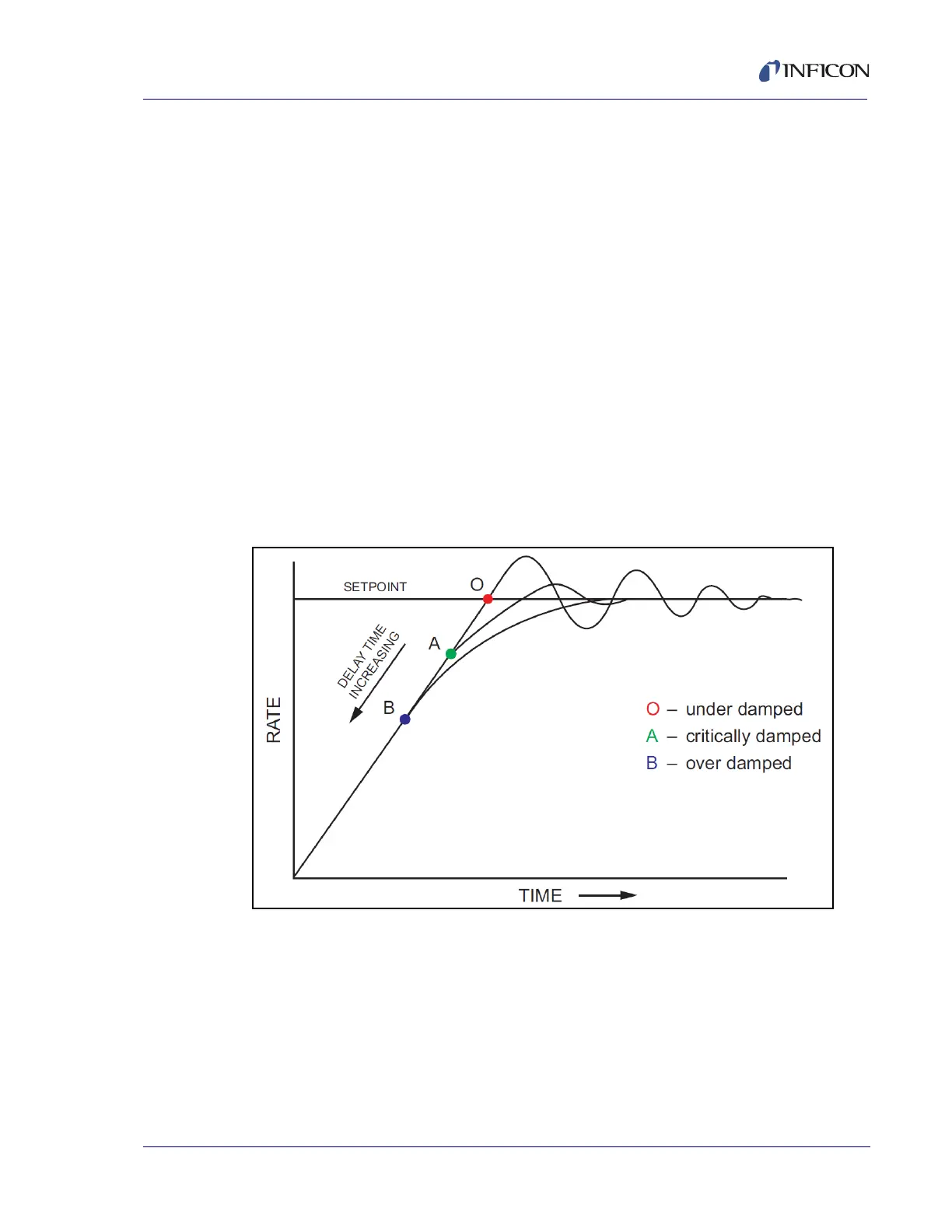7 - 7
PN 074-550-P1C
SQC-310 Operating Manual
7.5.1 Identifying a Fast or Slow Source
Classifying a source as being fast or slow is based on the time it takes for the rate
to change from a change in power (delay). It is straight forward to measure the
delay. Using manual power, establish a rate and allow it to become steady (refer to
Chapter 3, Operation for details). Increase the source power a few percent (~5% if
possible). Allow the source to again stabilize. If the delay time is greater than 1
second, the source is characterized as slow. Thermal sources, for example, are
slow responding and typically free of noise transients. To avoid overshooting and
constantly seeking setpoint (see Figure 7-4) , slow sources may require
adjustments to the PID parameters of the control loop that anticipate their long
dead time and slow response to changes.
All other sources are considered fast. In general, electron beam (e-beam) sources
(unless a hearth liner is used), some very small filament sources, and sputtering
sources are considered fast sources. E-beam sources in particular, are often fast
responding and noisy. They are also subject to arcing, which can create large
electrical noise spikes which can make tuning the PID loop difficult. Fast sources
may only require adjustments to the P and I parameters of the control loop.
Figure 7-4 Rate Control Behavior
